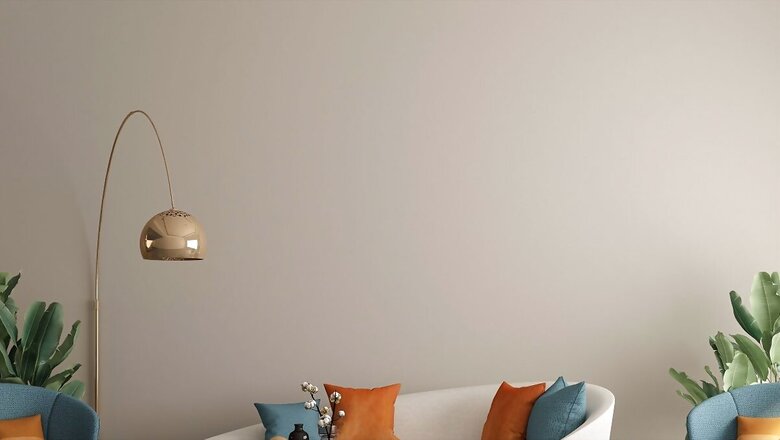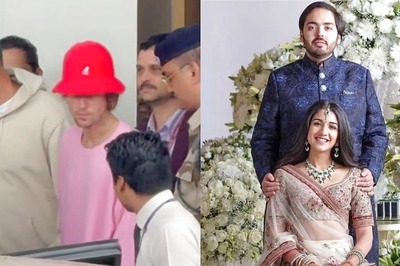
views
The history of interior design is a rich tapestry woven with the threads of shifting tastes, societal changes, and technological advancements. Each era has left its mark on how we conceive and create living spaces, reflecting both cultural values and technological innovations.
Ancient Times to the Middle Ages
Giulia Baima Bollone, Director, Embassy Interiors, says, “Ancient Egyptian interiors were characterized by opulent materials and intricate carvings, reflecting a reverence for the afterlife. The Greeks and Romans brought a focus on symmetry, proportion, and grandeur, with elaborate mosaics and spacious atriums becoming hallmarks of their design.”
The Middle Ages marked a shift towards functionality and austerity. However, this period of simplicity set the stage for the Renaissance, which rekindled an appreciation for classical beauty. Interiors of the Renaissance period were adorned with ornate frescoes and sumptuous textiles, celebrating art and culture.
Renaissance to the Victorian Era
“The Baroque era introduced grandiosity and theatricality to interior design, followed by the Rococo style’s lighter and more graceful aesthetics. Neoclassicism emerged next, drawing inspiration from archaeological findings and emphasizing classical simplicity,” adds Bollone.
The 19th-century Victorian era saw interiors become eclectic and cluttered, a result of mass production and the Industrial Revolution. “This period was marked by an abundance of decorative items and a mix of styles, reflecting the era’s fascination with opulence and variety,” opines Bollone.
Modernism and Beyond
The 20th century brought about Modernism, a movement that championed simplicity and functionality. Innovative materials like steel and glass were widely used, and design movements such as Bauhaus and Art Deco emphasized sleek, streamlined forms.
Bollone shares, “Mid-century modern design, popular in the mid-20th century, emphasized clean lines and organic shapes. This was followed by Postmodernism, which reintroduced eclecticism and whimsical elements, challenging the rigid norms of Modernism.”
Current Trends and Future Directions
Today’s interior design trends are increasingly influenced by sustainability and technology. Eco-friendly materials and smart home innovations are becoming integral to modern interiors, enhancing both convenience and efficiency. The fusion of historical references with contemporary innovations continues to shape the way we design our living spaces.
Giulia Baima Bollone, Director of Embassy Interiors, notes that this ongoing dialogue between utility and aesthetics is central to the evolution of interior design. The future promises designs that are not only visually pleasing but also environmentally conscious and harmonious.
Indian Interior Design: A Cultural Reflection
The evolution of interior design in India offers a unique perspective, deeply intertwined with the country’s rich cultural heritage. From the opulent palaces of the Maharajas to the intricately carved wooden panels in traditional homes, Indian interior design has always prioritized both functionality and aesthetic depth.
Vaishali Shah, Deputy General Manager Design, Godrej Interio, highlights findings from the company’s “HomeScapes” study. The study reveals that 58% of Indian consumers have a strong emotional attachment to their first independently purchased piece of furniture, with 44% envisioning it as a communal space for interacting with loved ones. This reflects the modern Indian home’s concept of “privacy in togetherness,” where shared spaces blend seamlessly with personal retreats.
Modern Indian Design Trends
Today, Indian interior design is moving towards a more sophisticated aesthetic, seamlessly integrating technology into affordable and accessible furniture. Personalization is key, allowing homeowners to express their individuality. Emerging trends blend traditional opulence with contemporary functionality, setting the stage for a new era that honors heritage while embracing innovation.
The contemporary preference for clutter-free, minimalist homes and space-saving furniture highlights a desire for functionality and organization. As design trends evolve, so does our perception of comfort, increasingly integrating technology, artistry, and sustainability. This shift towards adaptable interiors signifies a profound understanding of balancing utility and beauty in modern living spaces.
In conclusion, the historical evolution of interior design reveals a continuous interplay between form and function, tradition and innovation. As we look to the future, the integration of sustainability, technology, and personalization promises to shape interiors that are not only aesthetically pleasing but also harmoniously aligned with our evolving lifestyles.




















Comments
0 comment